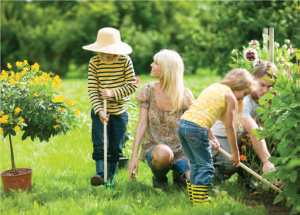
Photo credit: iStockphoto/Thinkstock
That suburban sea of emerald lawn may make your neighbors green with envy. But birds will give your yard the cold shoulder.
-
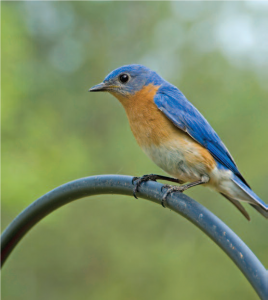
Photo credit: iStockphoto/Thinkstock
Birds will do more than fill your yard with their songs. Their skills at hunting less-desirable insects and cross-pollinating plants make them the kind of neighbors you really want. Given that New Jersey is a stopping-off point for dozens of migrating species—not to mention our year-round feathered friends—transforming your backyard into an avian Welcome mat is well worth the trouble. Open lawns are rather barren and sterile for wildlife. So says Scott Barnes, the Programs Director for the Central Region of New Jersey Audubon. “The more trees, shrubs, and perennials you can plant in their place, the more likely you are to attract birds.” According to the experts, attracting your favorite songbirds requires little more than some patience and planning.
- Plant the right things. If you want to attract birds, you need to cut into that swath of green lawn—most bird experts recommend transforming at least 25 percent of your grass coverage into lush gardens to attract birds. The key, according to landscape designer Jose German, is to appeal to a bird’s palate. “Planting bushes and trees that produce berries is the first step, especially if you want to feed them naturally,” he says. “That’s the easiest way to provide the foliage, nectar, pollen, berries, seeds and nuts that many species of wildlife require to survive.” He recommends shrubs and bushes such as serviceberry, elderberry, winterberry, viburnum, blueberries and raspberries, to provide plenty of food and a place to perch. Flowers and plants also attract birds, but the key to appealing to the local bird population is selecting plants that are native to New Jersey. Consult the experts at your local garden center if you want to ensure that the plants you choose are common to your area. “The key element for anyone trying to increase and benefit birds in their yard is planting native vegetation,” Barnes says. “Native plants with flowers or berries provide important food for many species of wildlife, including birds.”
- Provide water. “Water features are magnets for wildlife,” says Barnes. Birds need fresh, clean water for drinking and bathing—whether you go with a simple birdbath or a more elaborate pond or other water feature. You should change the water in your birdbath every two to four days—or as needed to keep the water replenished and fresh. Keep in mind that smaller water features will be more likely to attract the smaller birds, and a more elaborate pond with waterfalls and multiple pools will be more likely to attract a wider variety of birds.
- Give them shelter. Birds need a place to call home— and it doesn’t necessarily have to be a prefab birdhouse from the local home improvement store. “Wildlife require places to hide in order to feel safe from people, predators and inclement weather,” German says. “You can convert your yard into a heaven for birds if plant bushes and shrubs that will feed and protect them from predators.” If you do want to invest in a birdhouse, choose one that suits the kind of bird you’d like to attract. There’s a big difference between what the robins want (a simple, covered shelf where they can build a mud nest) and purple martins (a grander, multi-roomed shelter).
- Share a snack. While many birds can thrive on insects and fruit, others are looking for a different kind of feast— and an appropriate feeder can help you attract the birds you want, and avoid the pesky squirrels you don’t. “Selecting the right seed and the right feeder is important,” says German. “For example, nyger seed is high in calories and oil content seed, loved by finches and other wild birds. It is really small, so squirrels and big birds are not attracted to it.” The Audubon Society recommends using a variety of targeted feeders and feed mixes—such as a special hummingbird feeder stocked with one part sugar to three parts water—to attract the greatest variety of birds to your door.
- Keep it au naturel. While chemical fertilizers and weed killers may make your lawn look golf-course perfect, they can damage the environment and the birds that live there. But fortunately, there are techniques for keeping your lawn lush without harming the environment. “You can have a beautiful lawn without all of the chemicals,” German says. Step one is having your soil tested to determine its composition, so you can develop a specific plan of action to amend the soil for a healthier lawn. Aeration is also key, especially if your lawn is heavily traf
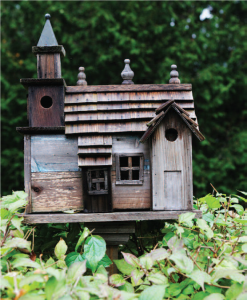
Photo credit: iStockphoto/Thinkstock
ficked. “Organic fertilizers are highly recommended at the beginning and the end of the landscaping season—it should be rich in organic material, like compost or compost tea,” German recommends. And to help control weeds, German suggests overseeding the lawn. “A thicker lawn reduces the opportunities for the weeds to grow.”
- Go a little wild. Letting parts of your backyard become a bit overgrown and not-so-manicured—including allowing a few weeds into the mix—can help support a larger and more varied bird population. Long native grasses offer seeds and shelter for various birds, and other weeds can attract certain species. “A weedy garden with plant stalks and seed heads to search for insects in will help attract hummingbirds,” Barnes says. Leaving some dead leaves and twigs can help foster nest building for birds—or provide homes for insects. “A decayed trunk is good because it will host caterpillars and insects,” German says. Consider it a smorgasbord for your favorite feathered friends.
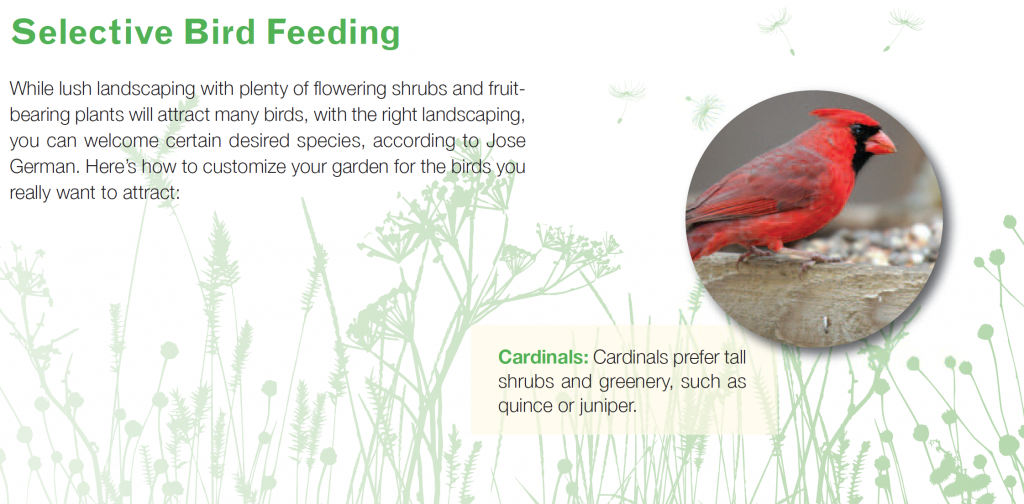
Photo credit: iStockphoto/Thinkstock
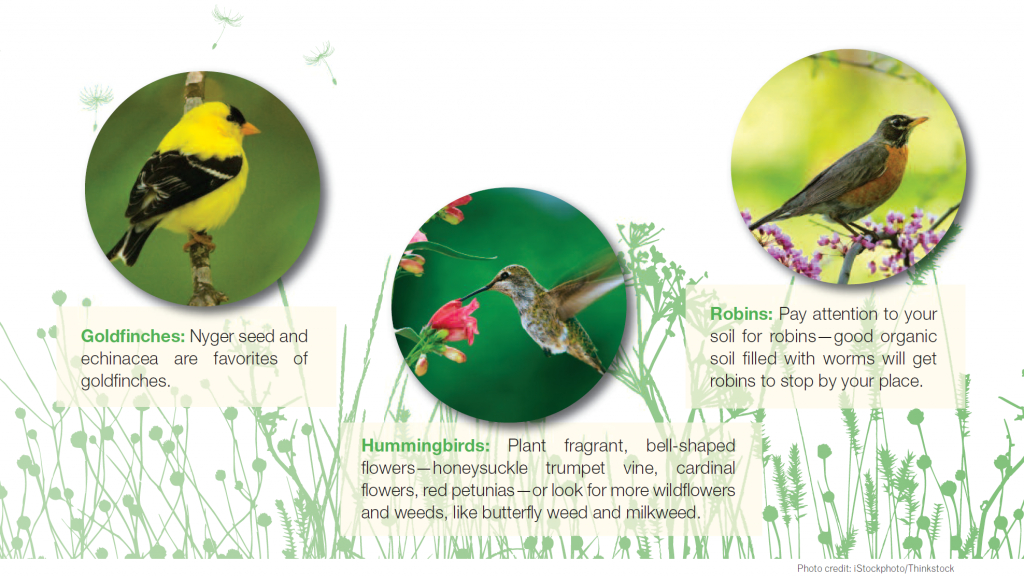
Photo credit: iStockphoto/Thinkstock
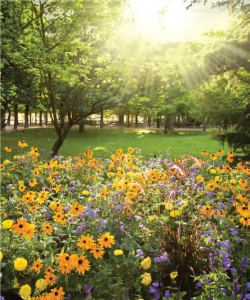
Photo credit: iStockphoto/Thinkstock
RARE BIRDS Beyond creating a safe and inviting habitat for birds, perhaps the biggest reward for the backyard birder is spotting a rare or exotic species from the back porch or kitchen window. Some are year-’round residents of the Garden State, but many more are merely visiting on their way north or south. It is an absolute certainty that, at some point, you will spot species you’ve never seen before and want to know more about them. So expect to familiarize yourself with the local Audubon web site, and buy a couple of field guides. Your largest additional investment is likely to be a new pair of binoculars. A lot of “backyard birders” keep them hanging by the kitchen sink or living room picture window. In recent years, optical companies have produced an overwhelming number of binoculars aimed at the bird watching market. Once you’ve completed your backyard project, it’s time to go shopping for a new pair. What are the rules for sorting through so many choices? Stick to these pointers for your first pair and you should be in good shape:
- Pick a magnification. Unless you have a multi-acre property, 7X should do just fine.
- Read online reviews. Pay particular attention to comments about the quality, brightness and sharpness of each model. This is what you’re paying for, right?
- Do you wear glasses? If so, some designs are friendlier than others. Rubber eyecups typically don’t work as well as turn-and-lock eyecups. Glasses-wearers also tend to find compact models problematic.
- Pick a price point that suits your family budget. If you need a new refrigerator, don’t spend $1,200 on binoculars. Price is determined largely be quality. The “mid price” for good binocs is around $300. If you want to test the waters with a cheaper pair, that’s okay—there are some decent ones available on sale for $50 to $100. Just know that you may be making another investment in a year or two. In terms of brands, you can’t go wrong with Bushnell or Nikon—and at the higher end of the spectrum Zeiss, Leica and Swarovski—but do 10 minutes of research before pushing the BUY button.
Better yet, instead of buying online, find a store that carries the models you’ve pinpointed as possibilities and try them in person. There is no right and wrong way to hold binoculars—everyone handles them differently. Feel the shape and weight in your hands, sense how they fit your face, and trust your instincts. This is especially true if you wear glasses.





